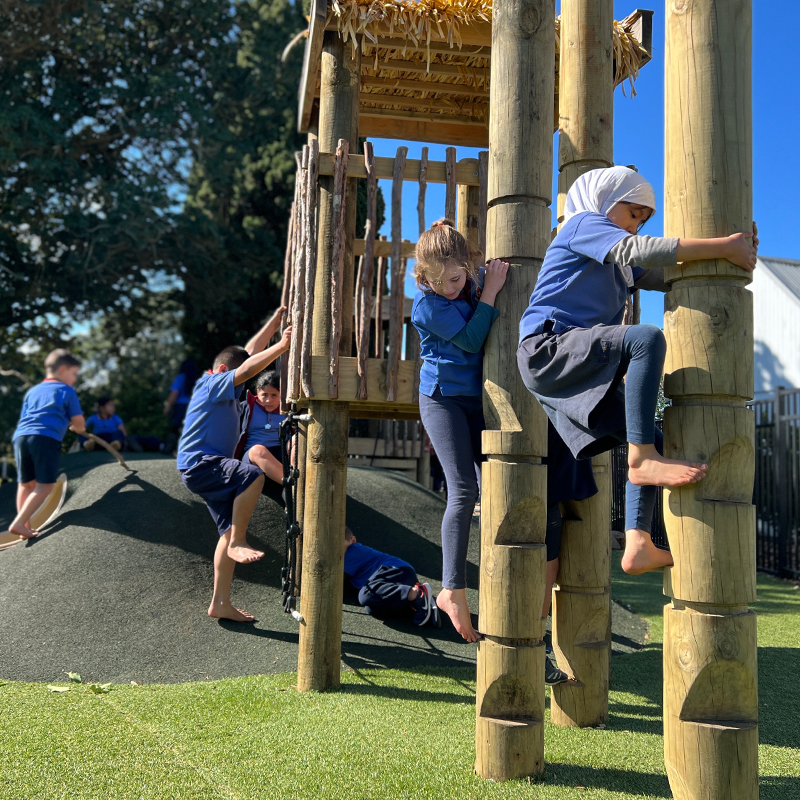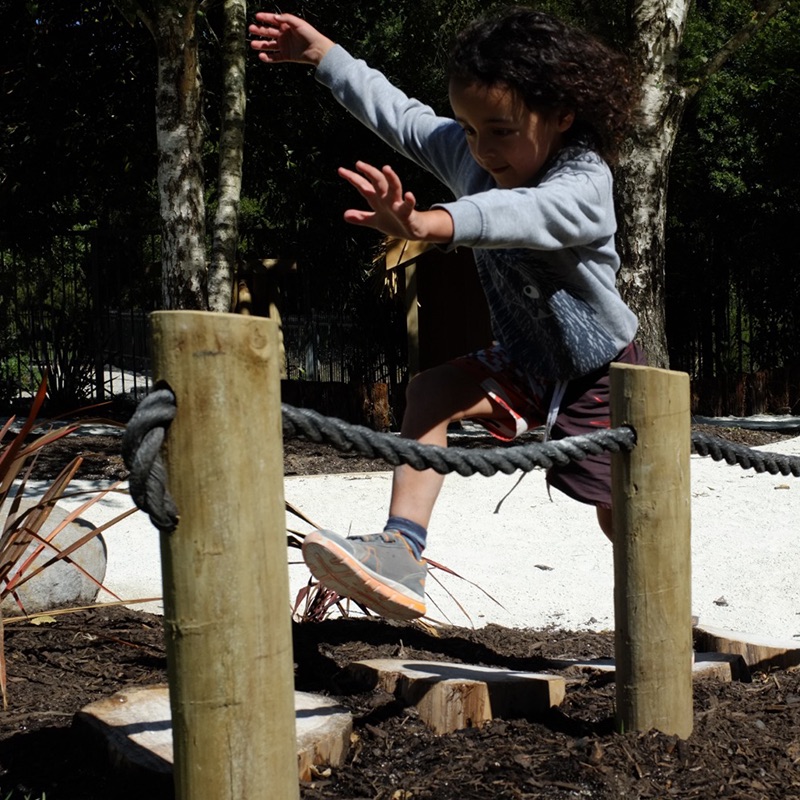

If you’re a parent, you’ll most likely be familiar with the term ‘helicopter’, and we don’t mean it as a mode of transportation. There is a rising movement in playground design countering helicopter parenting – creating spaces encouraging risky play. For early development, children need playgrounds that provide opportunities to try new things and take risks while playing.
Defining Risky Play
Risky play is any thrilling and exciting activity that involves risk. Playgrounds are a perfect environment for kids to challenge themselves and explore boundaries.
Types of Risky Play
Risky play can come in many forms but ultimately gives children the space to build confidence and test their limits on their own. There are six main categories of risky play:
- Play with heights.
- Play with high speed.
- Play with tools.
- Play near dangerous elements.
- Rough and tumble play.
- Play out of the sight of adults.
Benefits of Risky Play
Grass-stained pants, a few friction burns, and the occasional stubbed toe are not only necessary side effects of risky play but could be signs of developmental growth within your youngsters.
Emotional Regulation
During risky play, kids dose themselves with manageable amounts of fear and practice overcoming these feelings. Emotional regulation is a necessary skill to master to help children think before they act on a feeling. Playgrounds promoting risky play provide the foundation to regulate emotional responses like fear or anger in adulthood.
Adaptability
Despite our best efforts, there will undoubtedly come a time when children are forced out of their comfort zone and into the unknown. Children who engage in challenging play will develop the skills to handle the difficulties that can come with trying new things— a skill that becomes vital once they get to school age.
Executive Function
Play, especially risky play, helps kids develop better executive functions earlier; this is the part of the brain in charge of decision-making. Children learn by doing, not by being told what to do. Scrapes and scratches accumulated on the playground are essential feedback to kids’ bodies and brains, letting them know they need to improve their judgement. Their brains will learn to make better decisions and become better developed because of it.
Self-Confidence
Trying something risky builds a child’s confidence to say, “I can do this!”. Children who engage in risky play are more likely to take risks where failure is possible. It doesn’t matter if they fall because they know they will get back up and try again. Playgrounds that provide a safe environment for kids to try and fail are key to early development.
Risky Play is Worth the Risk
Playground design promoting risky play helps kids develop by trying something new and challenging in a safe environment. Here at Playscape, we pride ourselves on walking that fine line between exciting playground designs that will challenge your children while ensuring they remain safe while playing. Contact us today to discover the difference a Playscape playground can make to your kid’s playtime.